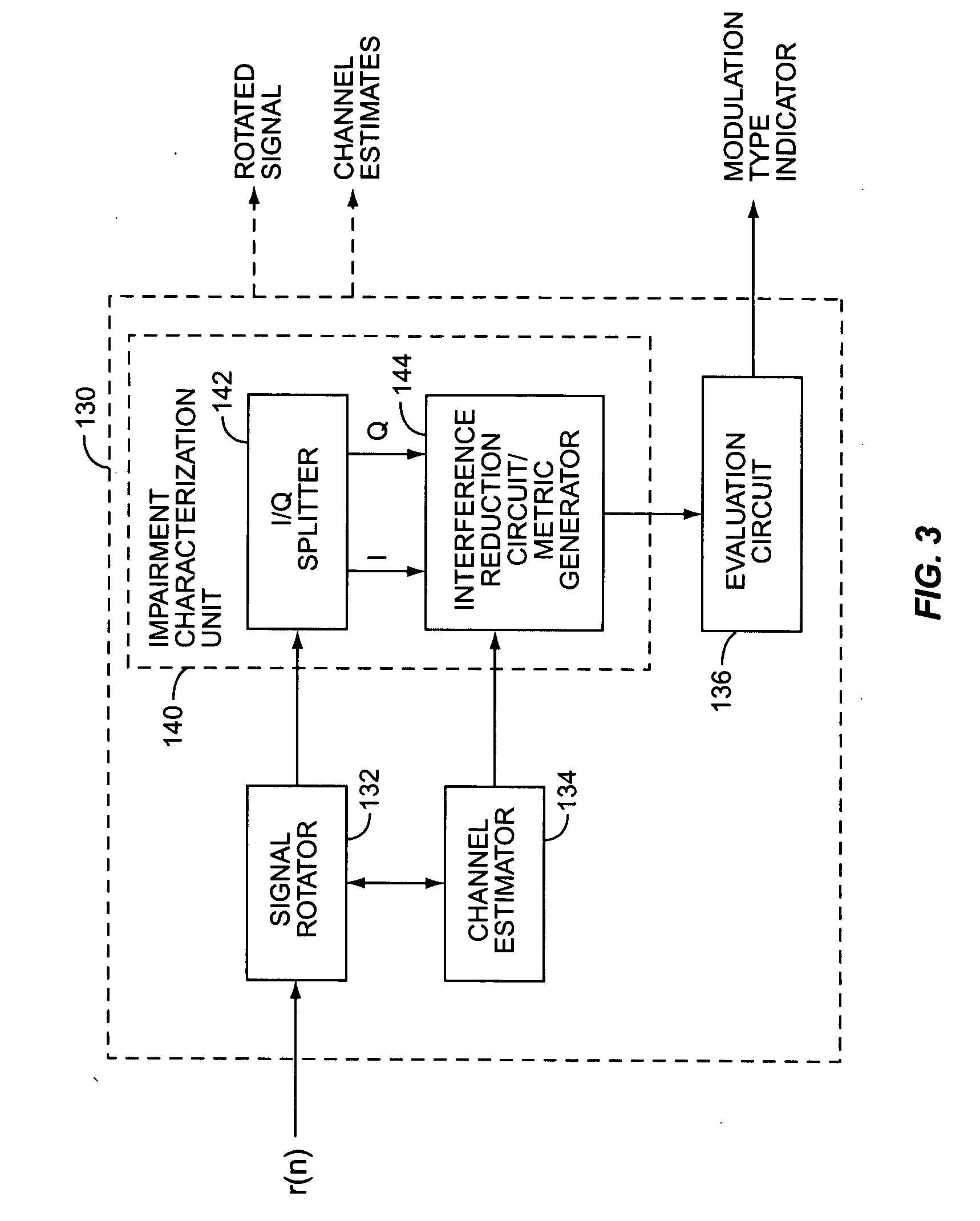Method and apparatus for interference cancellation in communication signal processing
a communication signal and interference cancellation technology, applied in the field of received communication signals, can solve the problems of poor speech quality, call dropout, and significant increase in interference effects, and achieve the effect of reducing interference in impairment components
- Summary
- Abstract
- Description
- Claims
- Application Information
AI Technical Summary
Benefits of technology
Problems solved by technology
Method used
Image
Examples
case 1
[0055] Simulations of the exemplary modulation detection methods 200, 200a of the present invention evaluated the first and second methods for the following signal-interference scenarios: [0056] GMSK modulated desired signal and interference; [0057] Case 2: 8PSK modulated desired signal, GMSK modulated interference; [0058] Case 3: GMSK modulated desired signal, 8PSK modulated interference; [0059] Case 4: 8PSK modulated desired signal and interference.
The simulations showed an improved receiver performance of approximately 1.2 dB using the first modulation detection method 200, and more than 3 dB using the second modulation detection method 200a for case 1 as compared to the performance of current receivers using conventional blind detection methods. In fact, the simulations show that using the second modulation detection method 200a, the receiver performance for case 1 approaches the performance of a receiver with perfect blind modulation detection. As a result, both modulation de...
PUM
 Login to View More
Login to View More Abstract
Description
Claims
Application Information
 Login to View More
Login to View More - R&D
- Intellectual Property
- Life Sciences
- Materials
- Tech Scout
- Unparalleled Data Quality
- Higher Quality Content
- 60% Fewer Hallucinations
Browse by: Latest US Patents, China's latest patents, Technical Efficacy Thesaurus, Application Domain, Technology Topic, Popular Technical Reports.
© 2025 PatSnap. All rights reserved.Legal|Privacy policy|Modern Slavery Act Transparency Statement|Sitemap|About US| Contact US: help@patsnap.com



